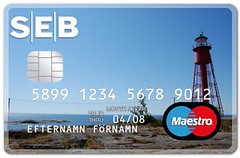Kyla Ebbert, a woman from Californa, was thrown off a Southwest Airline plane last year because the airline staff found her clothing too revealing. The story was discussed in both mainstream media and on blogs, and Southwest Airlines eventually apologized to Ebbert in a press release.
“Kyla, we could have handled this better, and on behalf of Southwest Airlines, I am truly sorry. We hope you continue to fly Southwest Airlines. Our Company is based on freedom even if our actions may have not appeared that way. It was never our intention to treat you unfairly and again, we apologize.”
Apart from issuing an apology, the airline also took the opportunity to create a somewhat positive spin on the story by poking fun at itself. In a news release, Southwest Airlines lowered its already low prices to “miniskirt” fares, a stunt that was widely covered in media and blogs.
Irish low fares airline Ryanair is another airline that has taken a blow in media recently. Readers of this blog may remember the “beds and blowjobs” debacle some time ago. And now they are at it again. Last week the Swedish Council against Sexual Discrimination in Advertising (ERK) found one of Ryanair’s ads to be sexist. The ad, which was published during the start of the school year, featured a scantily clad woman posing as a schoolgirl, announcing the “hottest back to school prices”.

But instead of admitting any wrongdoing, the airline went on a counter attack with statements like these.
“We are sure that the anti-funsters at the ERK do not speak for the majority of the famously liberal and easy going Swedes.”
“The ad simply reflects the way a lot of young girls like to dress. We hope the old farts at the ERK loosen up a little.”
“Ryanair defends the right of Swedish girls to take their clothes off.”
The company was then criticized by the Swedish MP, Birgitta Ohlsson urging customers to choose other airlines. Ohlsson said that “Ryanair is relying on old fashioned, outdated values and they’re proud of it.” But instead of responding to journalist questions, the company issued a new “fun” press release.
“Ryanair, Sweden’s only low fares airline, today laughed off the stupid comments by Swedish MP, “Boring” Birgitta Ohlsson, when she called on Swedish passengers to boycott Ryanair and fly on high fare, fuel surcharging, SAS in protest at Ryanair’s use of a sexy model to advertise its “hottest ever” back to school fare.”
“This really is a storm in a D cup! We’re sure that Boring Birgitta will be overrun by the flood of right minded, liberal, people who support Ryanair’s determination to defend the rights of girls and boys to get their kit off – if they want to.”
“We will also be sending free tickets to Boring Birgitta so that she can take a nice relaxing break, loosen up a little and stop calling for silly boycotts, avslutar Ryanair.”
The airline also announced it would “celebrate Ryanair’s sexy Swedish ad” by launching one million €10 mid week seats.
But it appears that the support from the easy going Swedes is minimal. Christian paper Dagen hopes that Ryanair chokes on their laughter. Ryanair is called “horny guys airline” in a column in Dagens Media. Bloggers are writing things like “Bye bye Ryanair”, “Yet another reason to dislike Ryanair” and “Ryanair: Swedens only no-brains airline”.
There is a huge difference in the way Southwest Airlines and Ryanair have handled these incidents. First of all, SA was not accused of being sexist, but to be too prude. Big difference. Then SA apologized and used humour to laugh at themselves. Ryanair does the opposite by not apologizing, talking trash to anyone who opposes, and then giving us more of the same thing they were criticized of from the start. Like this blogger says, to counter sexism with more sexism is hardly the smartest way to go.
Secondly, SA already had a presence in social media with its blog Nuts About Southwest which allowed the airline to have a closer dialogue with customers. Ryanair on the other hand, don’t respond to journalist questions, send statements in English in which there are no local spokespersons. If you on top of that try to gain support by referencing to the Swedish psyche, or rather your view of what Swedes are like, it is very easy that local customers feel that you are just an ignorant foreigner who paints a malicious portrait of how we are supposed to be.
Ryanair has a history of sexist related crisis and a CEO who leads by example. But maybe this is very clever branding. No other airline has positioned themselves as the airline for horny guys. The top position is available and Ryanair seems determined to take it.
Tags: ryanair, advertising, ryanair, reklam. Ping.
 Swedbank was the first Swedish bank to offer personalized payment cards when they launched
Swedbank was the first Swedish bank to offer personalized payment cards when they launched 
